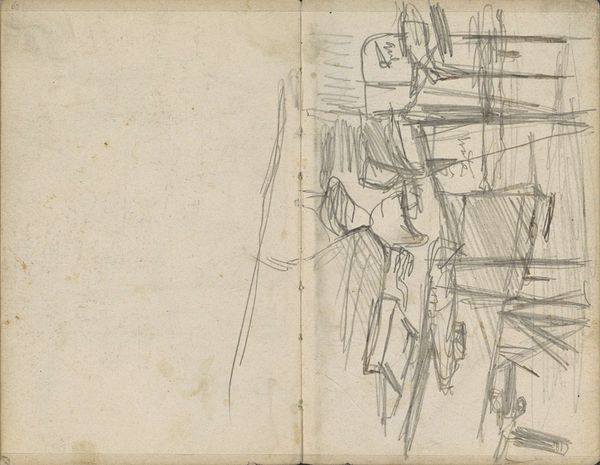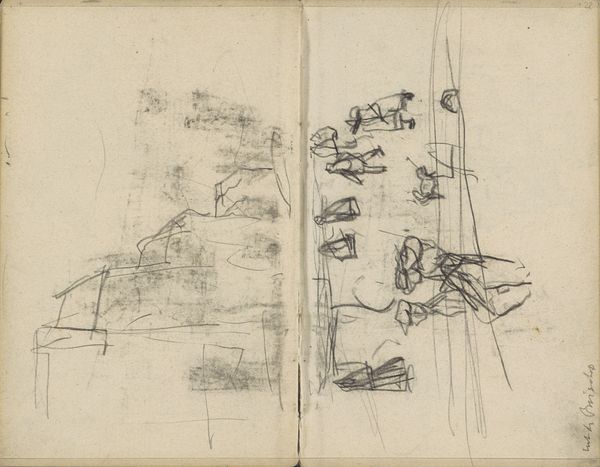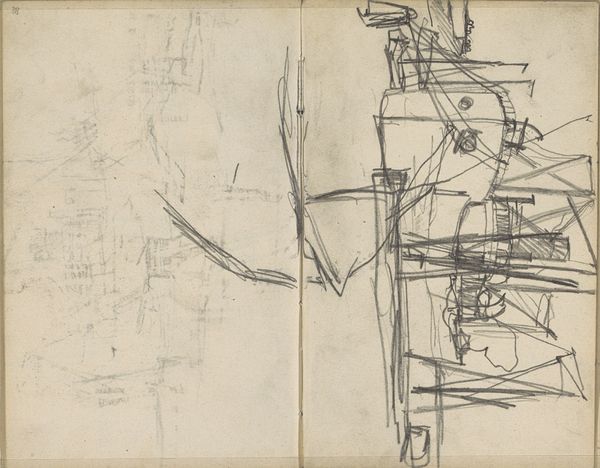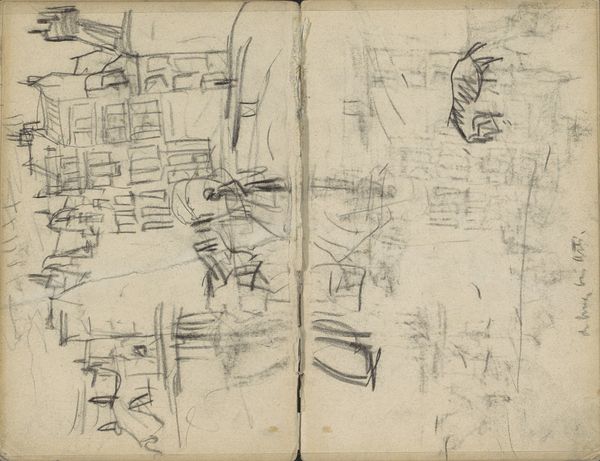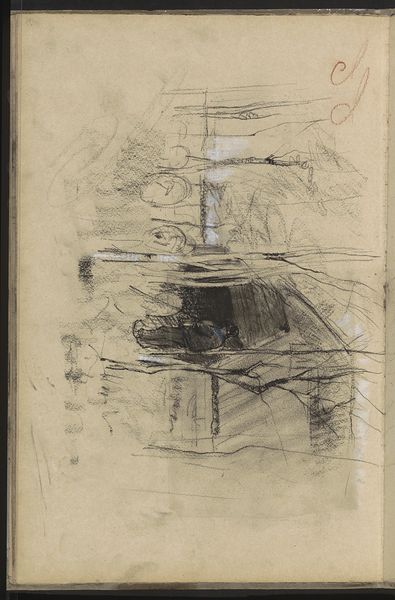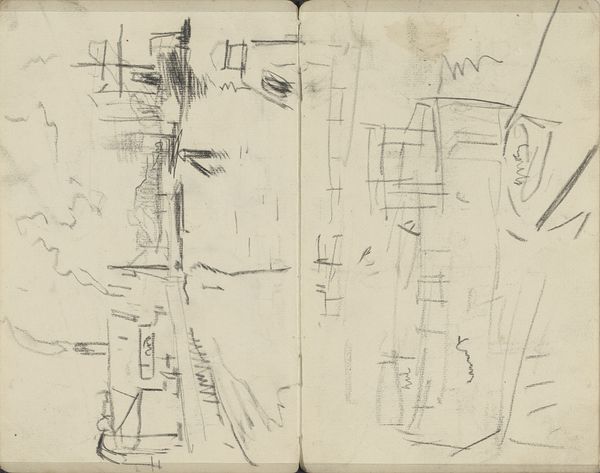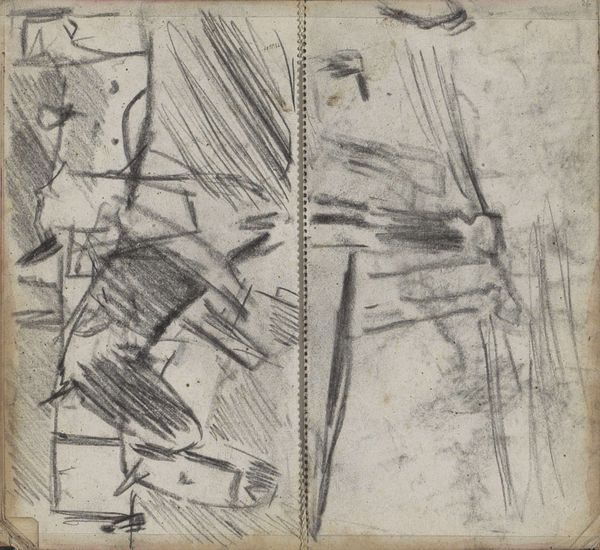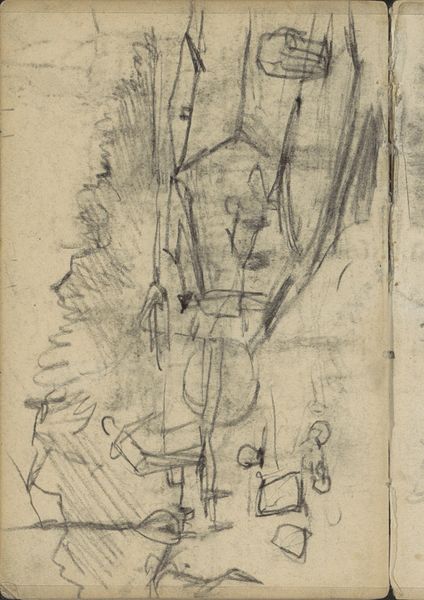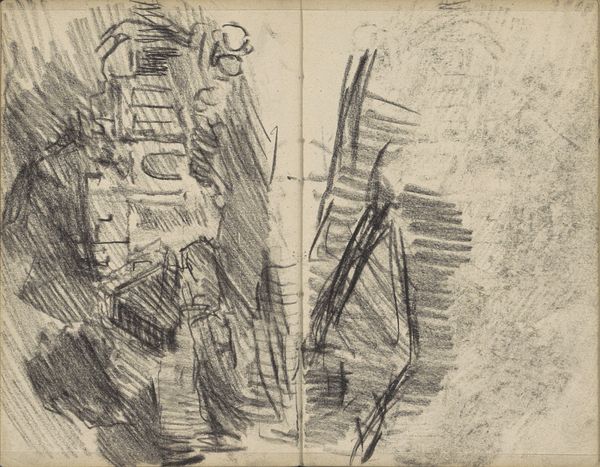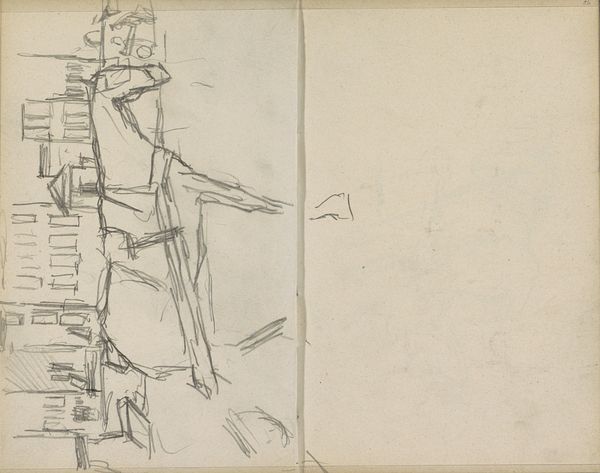
Paardenkar op een brug over de Lauriergracht te Amsterdam 1896
0:00
0:00
georgehendrikbreitner
Rijksmuseum
Copyright: Rijks Museum: Open Domain
Curator: Today, we're looking at George Hendrik Breitner's "Paardenkar op een brug over de Lauriergracht te Amsterdam," from 1896. It's a pencil drawing, currently held in the Rijksmuseum collection. Editor: It appears fleeting, almost ephemeral. The barest skeletal suggestion of forms emerges from the toned paper. Curator: Indeed. Observe how Breitner captures movement with an economy of line. The composition hinges on the structural arrangement of the bridge, the horse-drawn cart, and the canal-side buildings. It is an exemplar of impressionistic reduction. Editor: I see that, but I’m more interested in what the materials suggest. A simple pencil, some paper. Think about the urban experience it represents: the sounds, the smells, the labor involved in transporting goods by horse and cart in 19th-century Amsterdam. These sketches record a city's pulse, don't you think? It makes me want to know more about Breitner's physical process here; what kind of pencil was he using and where did the materials come from? Curator: Certainly, the context is important, but consider how Breitner manipulates light and shadow with just a few strokes, using value contrast to create depth and volume in an otherwise flat space. His perspective choices offer spatial cues to interpret his composition, while adhering to a geometric schema. Editor: And it begs the question, what drove Breitner to this subject and medium? Perhaps this relates to the growing industrialization affecting tradesmen, their labor reflected here in these lines. It’s not just about aesthetic choices; it’s a social document, capturing a slice of working-class life during a period of significant change. Curator: Well, whichever resonates for our visitors today, what we share is that Breitner, as captured by the structural and material aspects of his drawing, distilled a vision that embodies that era’s aesthetics and evolving infrastructure. Editor: Exactly. To look closely is to see, not just what's depicted, but also the unseen hands, the city, and the era that made this brief observation possible.
Comments
No comments
Be the first to comment and join the conversation on the ultimate creative platform.
